The rainbow flag or pride flag is a symbol of LGBT pride and LGBT social movements. The colors reflect the diversity of the LGBT community and the spectrum of human sexuality and gender. Using a rainbow flag as a symbol of LGBT pride began in San Francisco, California, but eventually became common at LGBT rights events worldwide.
Originally devised by the artists Gilbert Baker, Lynn Segerblom, James McNamara and other activists, the design underwent several revisions after its debut in 1978, and continues to inspire variations. Although Baker's original rainbow flag had eight colors, from 1979 to the present day the most common variant consists of six stripes: red, orange, yellow, green, blue, and violet. The flag is typically displayed horizontally, with the red stripe on top, as it would be in a natural rainbow.
LGBT people and allies currently use rainbow flags and many rainbow-themed items and color schemes as an outward symbol of their identity or support. There are derivations of the rainbow flag that are used to focus attention on specific causes or groups within the community (e.g. transgender people, fighting the AIDS epidemic, inclusion of LGBT people of color). In addition to the rainbow, many other flags and symbols are used to communicate specific identities within the LGBT community.
Variations:
Original Gilbert Baker Design
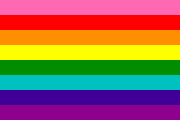
Inspired by the lyrics of Judy Garland’s Over the Rainbow, and the designs used by other social movements such as black civil rights groups from the 1960s, the Rainbow Flag was created. Baker hand-dyed and hand sewed this flag which flew at the San Francisco Gay Freedom Day in June 1978.
Seven-color version due to unavailability of pink fabric
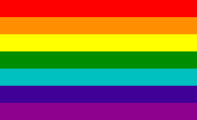
Following the assassination of Harvey Milk in 1978, many people and organisations adopted the Pride flag that he helped to introduce to the community. The demand was so great for a rainbow striped flag, it was impossible for the 8-stripe design to be made in large quantities. Both Paramount and Baker struggled to obtain the hot pink fabric and so began manufacturing a 7-stripe version.
Traditional Gay Pride Flag
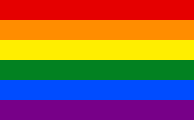
In 1979 the design was amended again. The community finalised this six-colour version and this is now the most familiar and recognisable design for the LGBT flag. Numerous complications over the odd number of stripes, including the desire to split the flag to decorate Pride parades, meant that one colour had to be dropped.
The turquoise and indigo stripes were combined to create a royal blue stripe and it was agreed that the flag should typically be flown horizontally, with red at the top, as it would be in a natural rainbow. This design continued to increase in popularity around the world, being a focal point of landmark decisions such as John Stout fighting for his right to fly the flag from his apartment balcony in 1989.
Progress Pride Flag
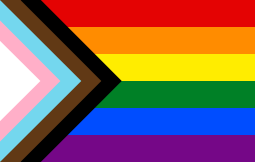
In June 2018, designer and activist Daniel Quasar released an updated version of the Pride flag. Combining the new elements of the Philadelphia design and the Transgender flag to bring focus on further inclusion and progress. This new flag added a chevron to the hoist of the traditional 6-colour flag which represents marginalised LGBTQ+ communities of colour, those living with HIV/AIDS and those who’ve been lost, and trans and non-binary persons.
This design went viral and was quickly adopted by people and pride parades across the world. The arrow of the chevron points to the right to show forward movement, while being on the left edge shows that progress still needs to be made for full equality, especially for the communities the chevron represents.
Intersex Inclusive Progress Pride Flag
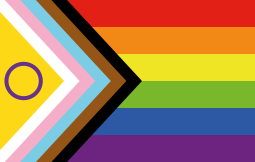
In 2021, Valentino Vecchietti of Intersex Equality Rights UK adapted the Pride Progress flag design to incorporate the intersex flag, creating the Intersex-Inclusive Pride flag 2021.
The intersex community uses the colours purple and yellow as an intentional counterpoint to blue and pink, which have traditionally been seen as binary, gendered colours. The symbol of the circle represents the concept of being unbroken and being whole, symbolising the right of Intersex people to make decisions about their own bodies.
Megathreads and spaces to hang out:
- 📀 Come listen to music and Watch movies with your fellow Hexbears nerd, in Cy.tube
- 🔥 Read and talk about a current topics in the News Megathread
- ⚔ Come talk in the New Weekly PoC thread
- ✨ Talk with fellow Trans comrades in the New Weekly Trans thread
reminders:
- 💚 You nerds can join specific comms to see posts about all sorts of topics
- 💙 Hexbear’s algorithm prioritizes comments over upbears
- 💜 Sorting by new you nerd
- 🌈 If you ever want to make your own megathread, you can reserve a spot here nerd
- 🐶 Join the unofficial Hexbear-adjacent Mastodon instance toots.matapacos.dog
Links To Resources (Aid and Theory):
Aid:
Theory:
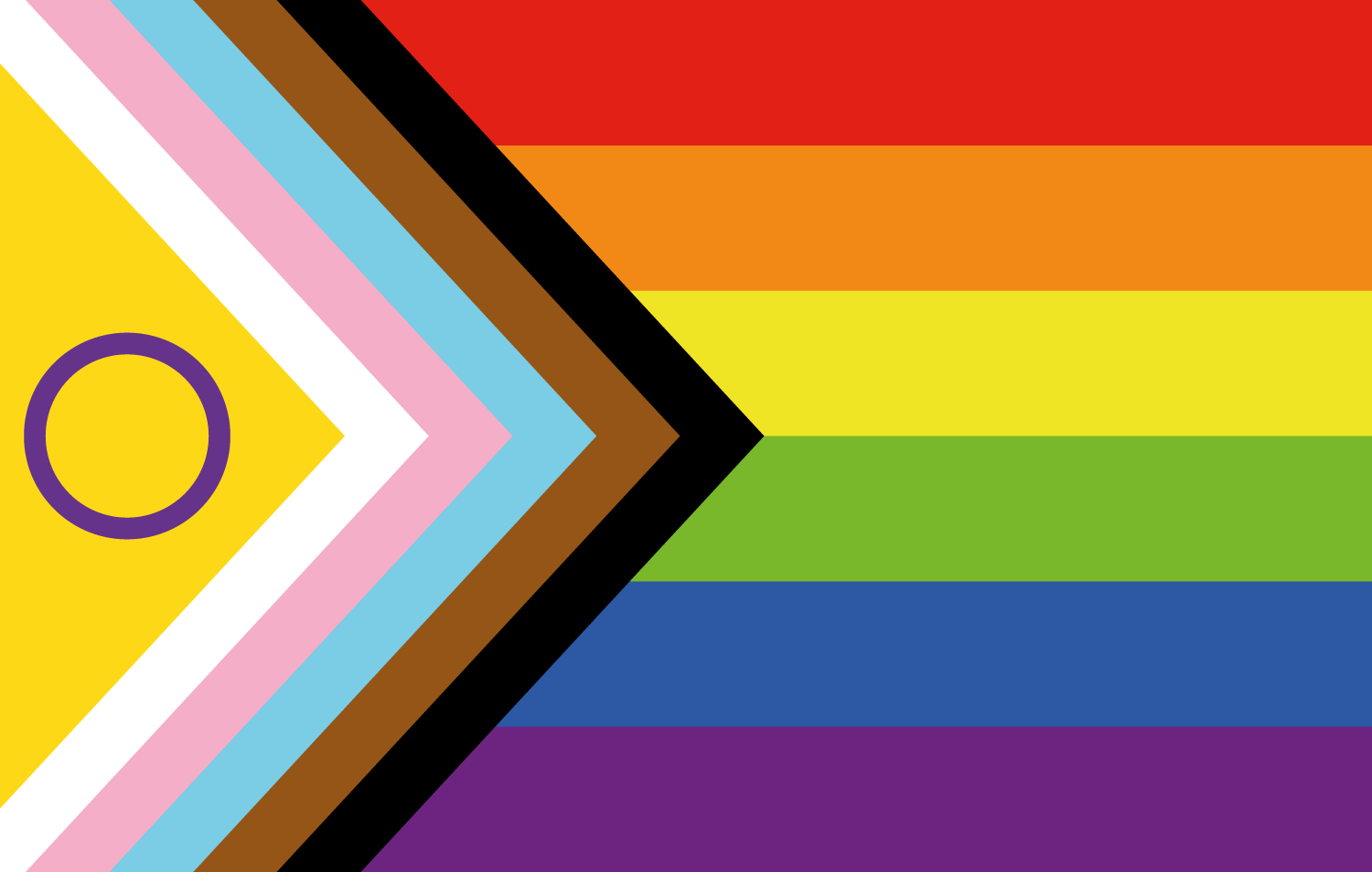
HAPPY PRIDE WOOHOO YIPPEE!!!!
I am pansexual . I want to ask the bi users of hexbear (I know you're here) how they would define the difference between pan and bi, because it doesn't really seem right to call myself bisexual. Basically the way I see it, being bi is being attracted to masculinity and femininity, or certain features in men and different features in women. Being pan is experiencing attraction regardless of gender. Like the girls I am attracted to have just as much in common with the boys I am attracted to as they do each other. I feel like my attraction to genders is not really a discrete thing, like my attraction to masculinity and femininity aren't different, they're just attraction. Honestly I wouldn't even say I'm attracted to masculinity or femininity at all because those just aren't concepts I think of when I look at someone.
. I want to ask the bi users of hexbear (I know you're here) how they would define the difference between pan and bi, because it doesn't really seem right to call myself bisexual. Basically the way I see it, being bi is being attracted to masculinity and femininity, or certain features in men and different features in women. Being pan is experiencing attraction regardless of gender. Like the girls I am attracted to have just as much in common with the boys I am attracted to as they do each other. I feel like my attraction to genders is not really a discrete thing, like my attraction to masculinity and femininity aren't different, they're just attraction. Honestly I wouldn't even say I'm attracted to masculinity or femininity at all because those just aren't concepts I think of when I look at someone.
But I wanna see if anyone agrees or disagrees. Advise me, oh wise bisexuals
I prefer the bi label over the pan label because of two things only. I like the flag colours better. And in an episode of Star Trek, the scriptwriters accidentally used the word "bisexual" when Dr. McCoy was describing a creature that's able to reproduce asexually (tribbles).
It was called bi when I came out, and I'm not changing it for you whippersnappers, harrumph. Or something. The edges of pan and bi are artificial to me tbh. Use the term you like best, labels are bullshit
Bisexuality refers to attraction to both ends of the gender spectrum rather than "half" of it so to speak. I like men, I like women. I like those in-between. That's what it has always meant to me and basically every other bi person I've ever talked to and read about. I am not bisexual because I like boobs and mens forearms, I'm bisexual because I like men and I like women.
Any definition but that is trying to backwards engineer it from an assumption that it must be binary in some other form, because otherwise why do we use the term bi. But we don't impose the restrictions that come from this kind of thinking on to any other sexuality. We don't tell gays and lesbians that they're not gay if they like enbies too or if they don't fall totally within the expected norms, at least we all agree we shouldn't, a straight person who is in a relationship with someone who is gender noncomforming doesn't cease to be straight.
Why do I need to be rigidly defined by the binary when even the straights don't?
I’m bisexual because I love every gender but I do experience a different kind of attraction for masculine vs feminine vs agender traits. If your definition can be generalised to: bi is when gender expression influences the way you’re attracted to someone (but you’re still attracted to all genders) and pan is when gender expression has no influence on attraction then I guess you wouldn’t be bi. But since many people define bi as simply being attracted to all genders you can still call yourself bi and not many people would complain.
Gender is complex though so attraction to gender is also complex. And traits can’t really be put into feminine, masculine or agender boxes so that complicates the above definition. I don’t look at people and try to determine the masculinity/femininity levels of all their traits but I do recognise a general pattern where my attraction to men, women and enbies differs.
I don’t like thinking about the difference between pan and bi too much because it make my head hurt and trying to answer your question made me doubt my biness lol.
Unless you're in their head, it's impossible to tell the difference between a bi person and a pan person. So it doesn't really matter.
Idk, I'm still a bit confused on how I define it for myself. Like, there are people who don't consider themselves male or female and I'm attracted to them too. Plus I'm still navigating biromantic feelings by thinking a lot of how I'd date men.
I'm Bi because I experience different types of attraction depending on whether the person is displaying outward masculine or feminine traits. I'm attracted to most women. But I'm really only attracted to men who are either feminine or very masculine.